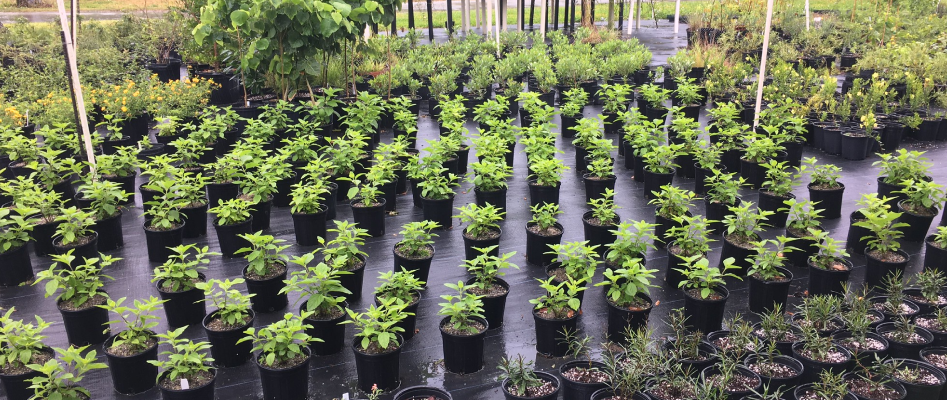CPC Best Plant Conservation Practices
to Support Species Survival in the Wild
to Support Species Survival in the Wild

Maintaining space between gallon pots increases air flow at the Fairchild Tropical Botanic Garden nursery. Photo by Joyce Maschinski
Pinaceae
Pine family
Abies fraseri (Pursh) Poiret
Fraser fir
A. fraseri is found at 1500 m elevation in North Carolina, Tennessee, and Virginia.
Plants
Seed
Container (plug)
Seeds exhibit physiological dormancy.
Seeds are stratified for 112 days and germinated under 30D/20N °C alternating temperature cycle. Germination was greater under light than dark.
Place seeds in moist peat moss or moist sand for 1-3 months at a temperature of 4 degrees Celsius, a process known as cold stratification. Once the seeds begin to germinate transplant to soil and allow to grow. Avoid placing seeds under a mist system, as the constant moisture on the soil is a breeding ground for disease and insects.
Place seedlings in a greenhouse and water as needed. Partial shade is preferred for first year. Excessive heat and sunlight may damage them in the first year. After the first year, place into acidic, well-drained, sandy loam soil. Fraser Fir doesn’t tolerate heat very well and is adapted to high elevation with cold winters and high snowfall. (https://sites.google.com/site/fraserfirseedpropagation/)
A. fraseri has conservation concern status.
Franklin, J. F. (1974). Abies Mill. Fir. Pp. 168-183. In: C. S. Schopmeyer (Tech. Coord.). Seeds of woody plants in the United States. USDA. Forest Service. Agriculture Handbook No. 450.
Baskin, C.J. and Baskin, J.M. Seeds: Ecology , Biogeography and Evolution in Dormancy and Germination, Academic Press, 1998. Chapter 10: A Geographical Perspective on Germination Ecology: Temperate and Arctic Zones, pages 331- 458.
 Equipment List
Equipment List

